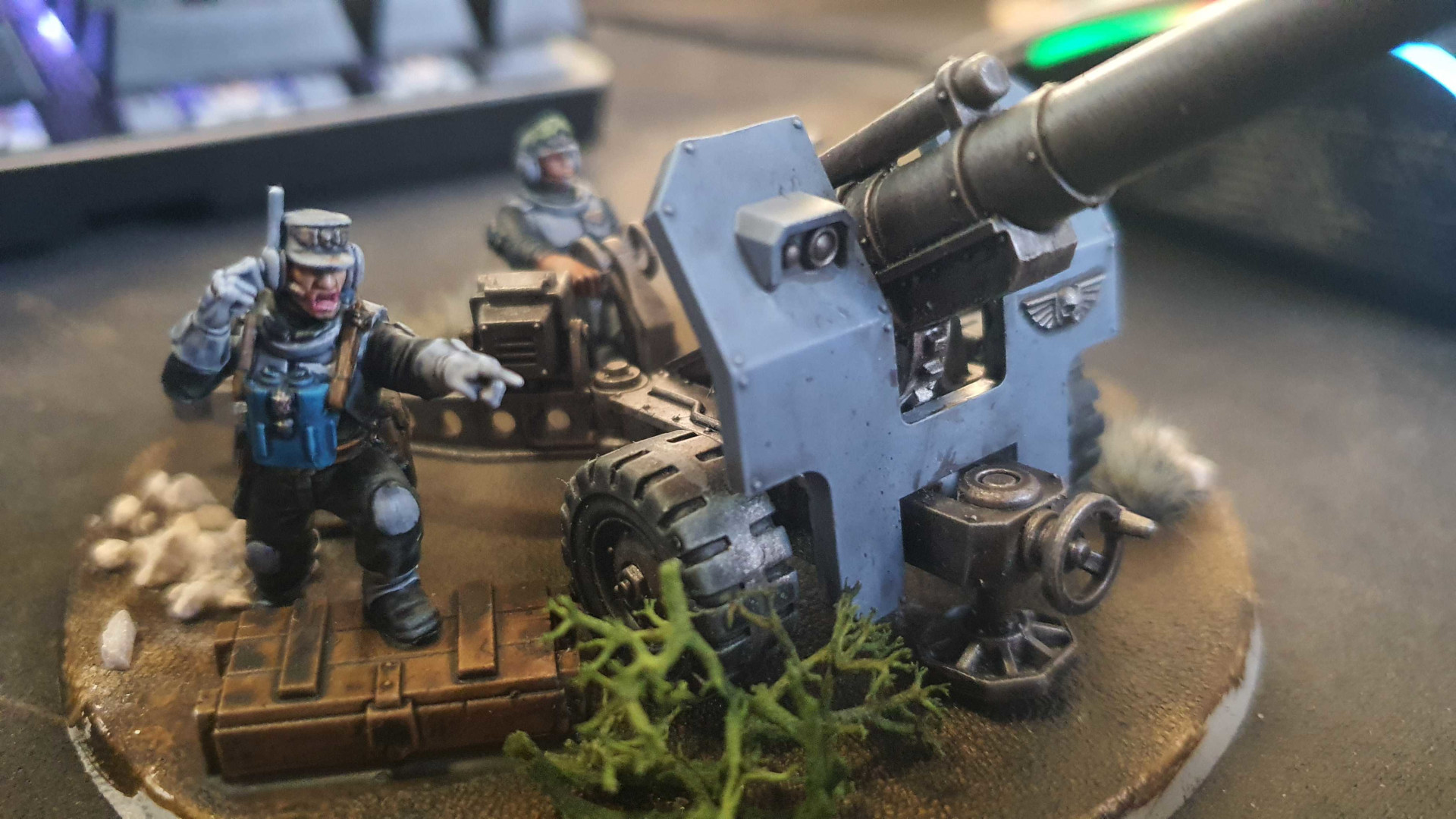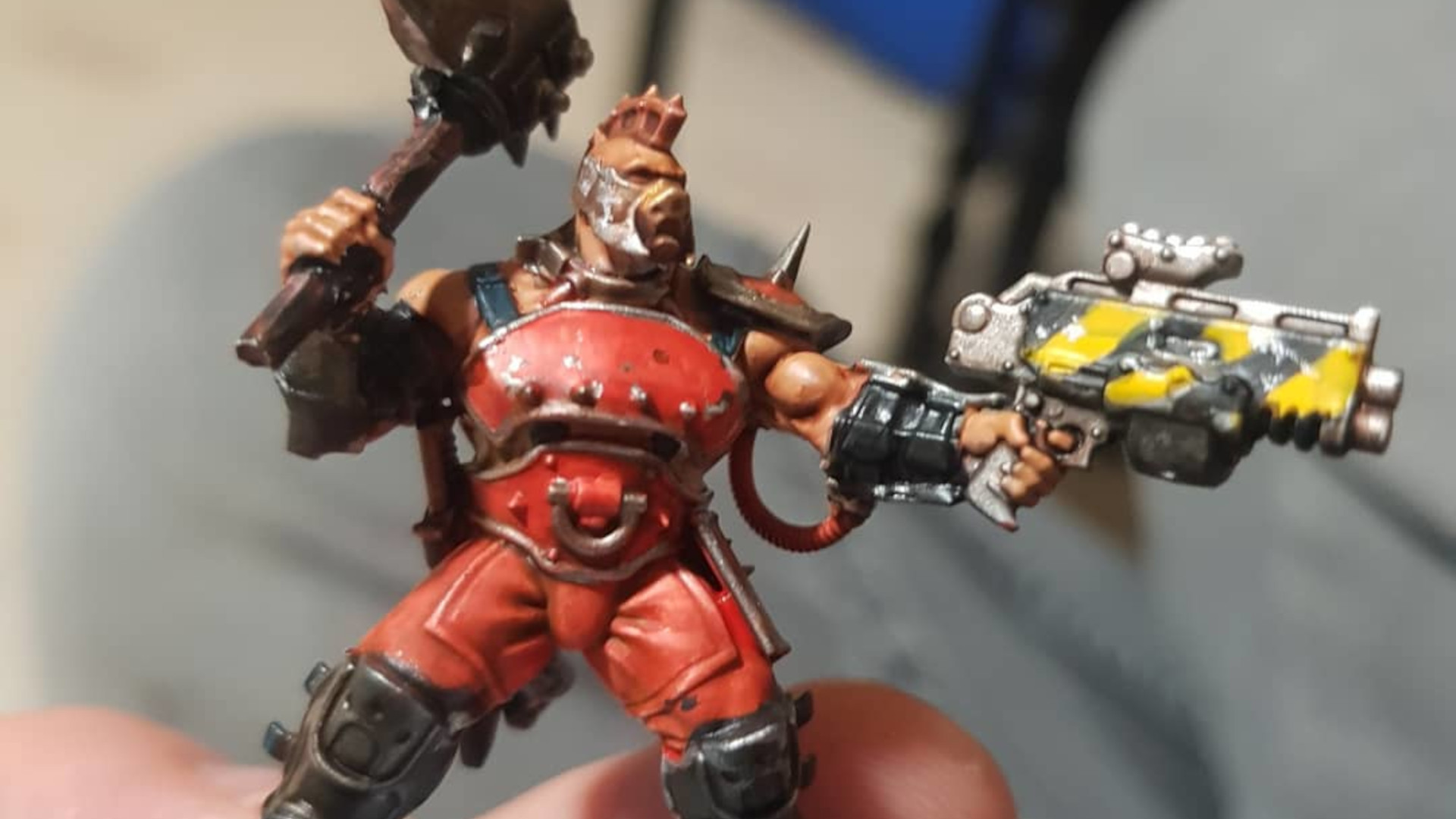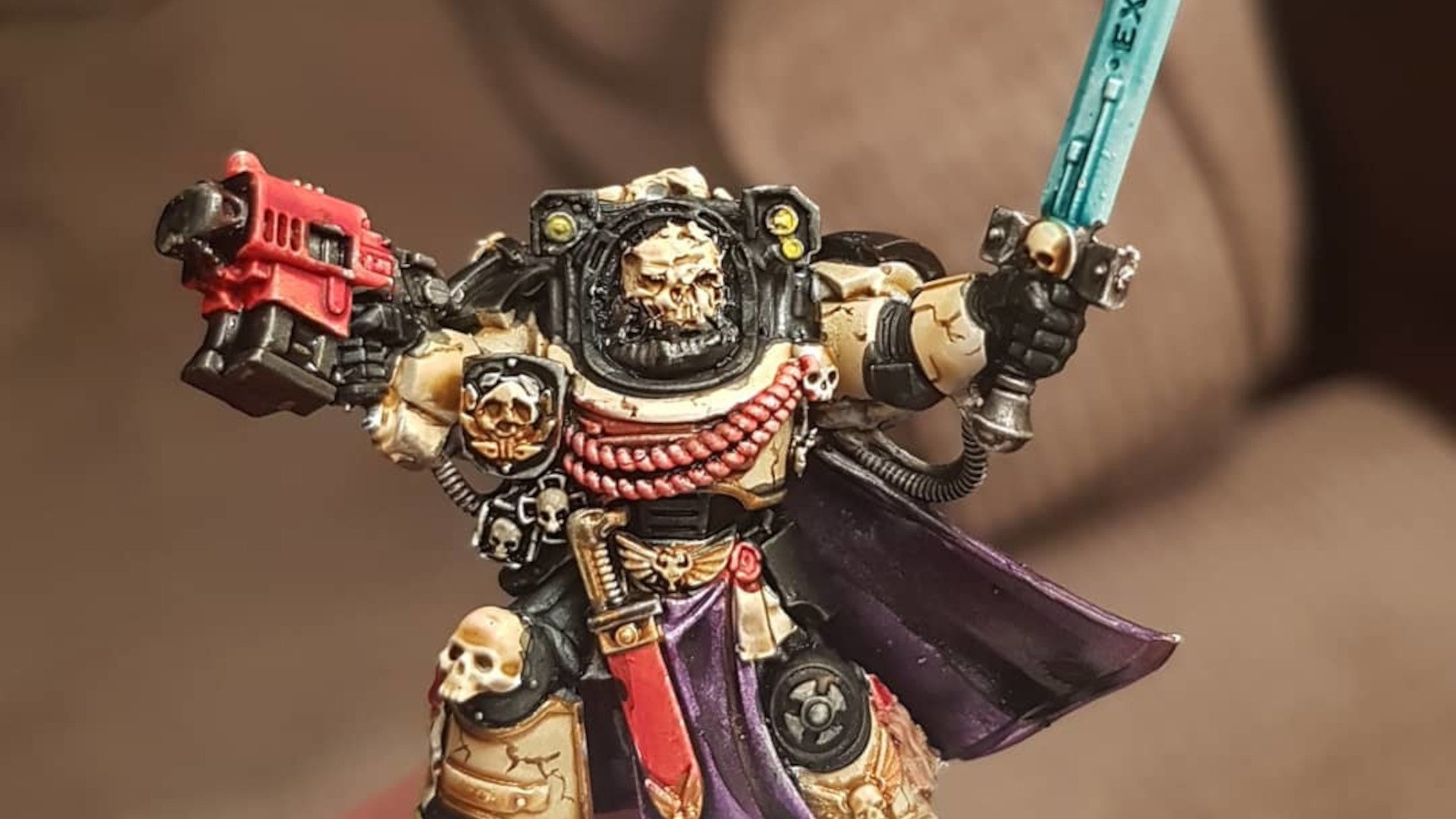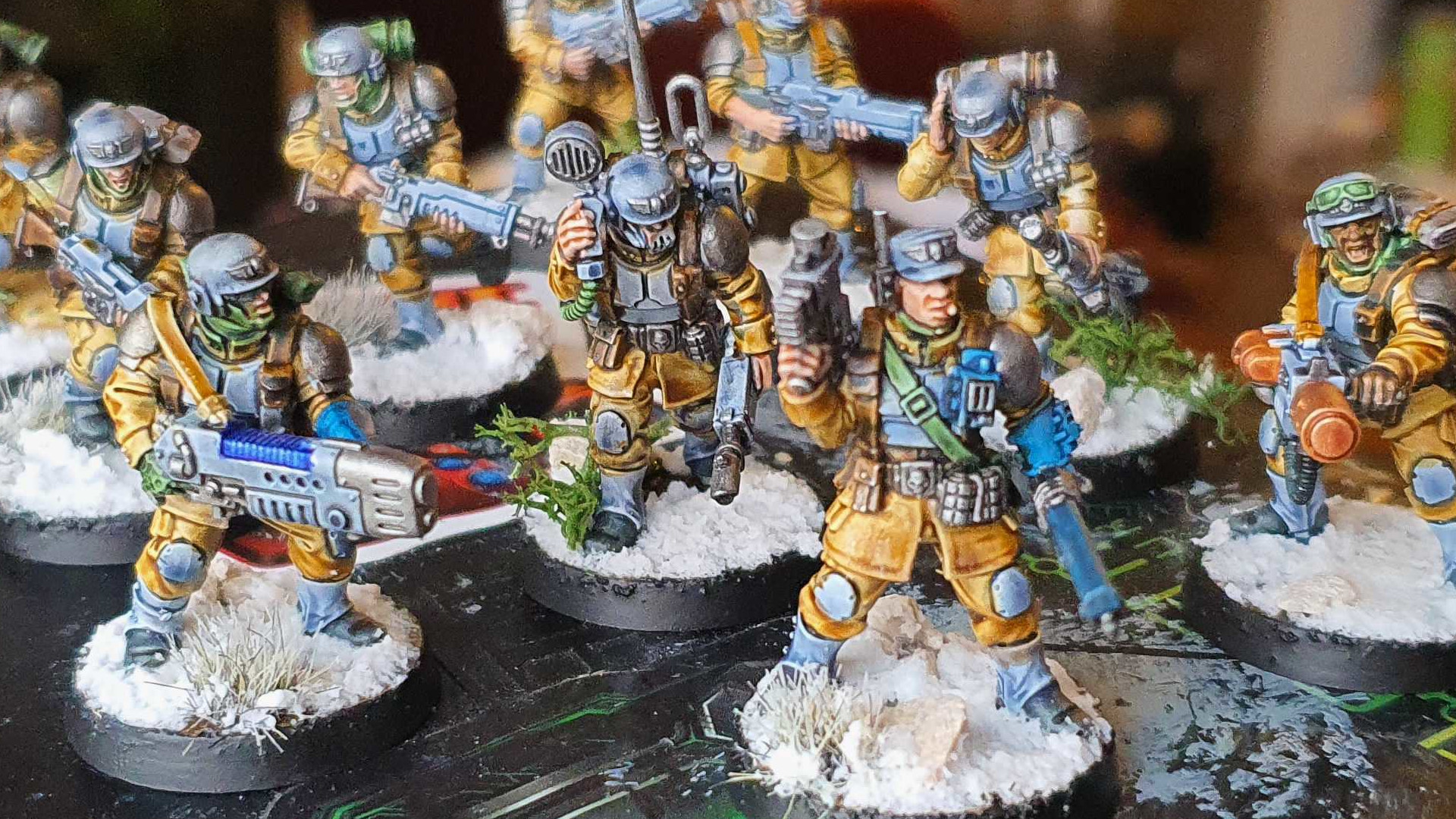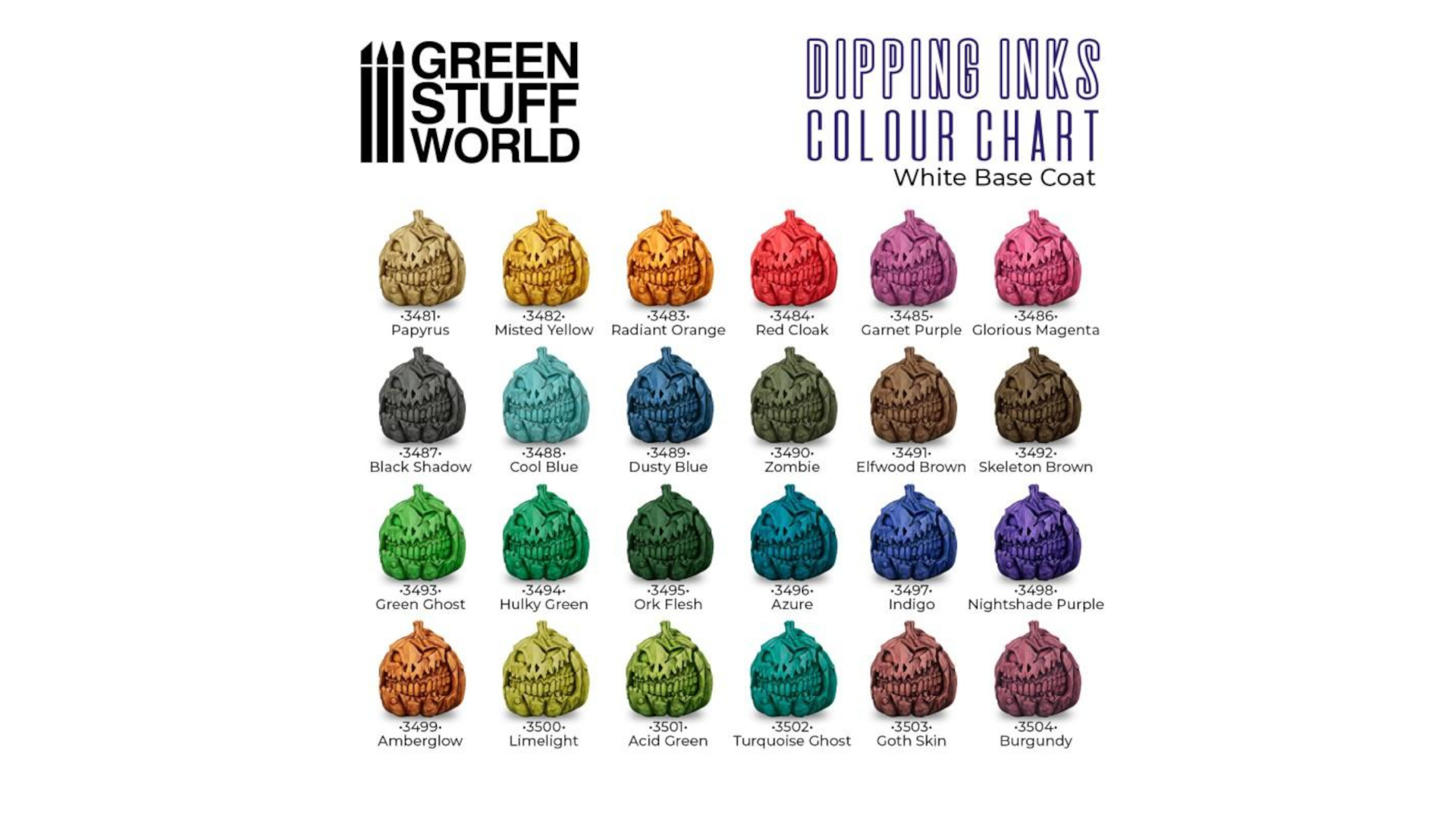Games Workshop introduced the Citadel Contrast Paint range in 2019, to help beginners paint miniatures with less difficulty, and to speed up certain steps for experienced painters – and mini painters reacted as if the firm had invented tartan paint. Now the term “contrast paint” is used for a whole class of similar paints from different makers.
You apply contrast paints over a white or bright base layer – they don’t work over dark basecoats. Unlike washes they’re highly pigmented, producing bright colours. The “contrast” effect is what makes contrast paints so different from other acrylics – the paint naturally pools in recesses and pulls away from edges. This creates shadows and highlights with a single application of one paint.
Contrast paints can be used to paint a whole model, or to speed up a particular painting step, and they let you do funky tricks with metallics. They’re a useful addition to the toolbox and you can find a job for them, whether that’s speed painting an entire Warhammer Age of Sigmar army or powering through a few finicky painting tasks for your Warhammer 40k faction. If you’re not convinced by contrast paints after reading our guide, check out our guide to painting miniatures the old-fashioned way.
How to use contrast paints
Contrast paints are mostly see-through. That means if you put them onto a black undercoat, they will be almost invisible. Use them on a white or near-white basecoat, however, and they produce extremely vibrant colours.
The initial GW contrast paints, and many competitors, produce a very strong ‘contrast effect’. The pigment in the paint tends to wick away from raised edges and pool in recesses, creating shading and highlighting with a single paint. This makes these contrast paints excellent for heavily textured surfaces like muscles, cloth, fur, but less good for large, smooth surfaces, like armour plates.
Some contrast paint competitors, and some additions to the Citadel Contrast Paint line that Games Workshop released in 2022, have a less pronounced contrast effect, and work better on smooth surfaces. Imperial Fist Yellow provides miraculuosly smooth yellow results, suddenly making it easy to paint the notoriously challenging Space Marine colour scheme.
Because contrast paints are translucent, if you make a mistake with them you can’t tidy it up by simply applying more of the same paint. You’ll need to reapply your baselayer, then use contrast paint over that – or simply make any corrections with conventional acrylics.
Contrast paints use a different medium to other acrylics. If you want to preserve the contrast effect while reducing the intensity of a contrast colour, you should use contrast medium rather than water or standard matt medium.
Contrast paints don’t cure as hard as other acrylic paints, so handling or transporting a model may brush off some paint, particularly on raised surfaces. A coat of matt varnish will help to prevent this damage.
Contrast paints and metallics
Contrast paints make shading metallic colours simple. Black Templar contrast paint, thinned slightly with contrast medium, can quickly shade silver such as blades, chainmail, and gun barrels.
Contrast paints can be used to create coloured metallic effects. To give an Alpha Legion Chaos Space Marines a vibrant metallic blue-green colour, basecoat the whole model with Boltgun Metal spray, drybrush the upper surfaces of the model with a bright silver like Stormhost Silver. Then apply your choice of teal contrast paint, such as Aethermatic Blue. Presto! Shiny teal Alpha Legionnaires.
If you want to give your Adeptus Custodes vehicles a luxury “candy red” treatment that you’ve seen on vintage American sports cars, start with a basecoat of Retributor Gold spray, and then apply Baal Red contrast paint over the top. The result is a deep, rich metallic red.
Contrast paints and underpainting
Contrast paints work with the “underpainting” technique, sometimes referred to as “slapchop” or “sketch and glaze”, by taking advantage of the paint’s translucency. When underpainting, you first use a basic colour to define the shadows and highlights on the model, then apply a translucent paint over the top to give it its tone.
Underpainting allows you to highlight an entire model with just one paint. Starting from a black basecoat, you apply white highlights. This could be as basic as spraying the model from above with white paint (a zenithal highlight), dry-brushing the model and concentrating on raised surfaces (slapchop), or carefully highlighting the model with white paint (sketch style). You then apply contrast paint over the top. The more time you put into underpainting the highlights,
You can also underpaint with colours for a more pronounced effect – a similar technique was used by classical painters, who used an olive green base coat to shade white skin before applying skin tones on top. When working out how the colours will blend, you need to think about the effect of adding multiple colour filters, not adding multiple colours of light: green underpainting creates very dark shadows beneath red tones, while pink creates warm orange shadows when used under yellow.
Contrast paint and airbrushes
Contrast paint can be used through an airbrush. Breaking the paint up into tiny particles destroys most of the “contrast” pooling properties, so it behaves more like a normal translucent paint. This works particularly well when you want to use contrast to create coloured metallic effects on a vehicle, where a strong contrast effect won’t play nicely with large, flat armour panels.
Contrast Paints alternatives
Several other companies make alternatives to Citadel contrast paint. These paints all have slightly different tones and properties – we’ll be updating our guide as we test these different brands, so make sure you check back.
Green Stuff World dipping ink
Wargamer received free review samples of Green Stuff World dipping ink, and we’ve been gradually testing them out. The Dipping Ink range goes very hard on the “contrast” part of contrast, settling into recesses but not tinting raised surfaces as much.
They apply more pigment to raised areas than with a shade wash, but less than even the first wave of Games Workshop contrast paint. If you have fond memories of Devlin Mud or Badab Black, you might appreciate them, and they work great right out of the bottle for areas where pronounced contrast is the goal – bones, fur, skin, tree bark.
It took me multiple coats to build up a solid color on raised areas, and I was fighting the ink back from destroying detail in recessed areas.
- Army Painter Speedpaint
- Cephalopod Studios Cuttlefish Colours
- Green Stuff World Dipping Ink
- Vallejo Xpress paint
If you’re investigating Contrast paints because you’re just getting started in the hobby, we have a beginners guide to help explain “What is Warhammer 40k?“, as well as an introduction to the Warhammer 40k starter sets. Or if you’re catching up on a painting backlog because you don’t fancy playing until Warhammer 40k 10th edition is confirmed, make sure to check back with Wargamer regularly for news.

